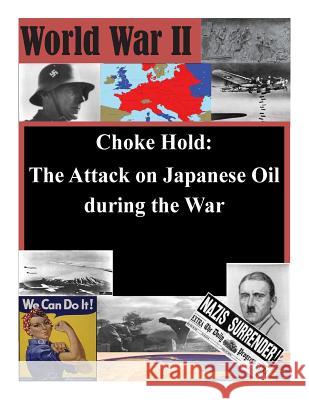Choke Hold: The Attack on Japanese Oil during the War » książka
Choke Hold: The Attack on Japanese Oil during the War
ISBN-13: 9781500371036 / Angielski / Miękka / 2014 / 116 str.
After WW I, Army airmen like Billy Mitchell, in a bid for service independence, touted land-based air power's dominance over ships. Later, airmen at the Air Corps Tactical School developed a theory of independent air power application based on strategic bombing. These airmen persuaded Congress to purchase the tools to implement strategic bombing--fleets of heavy bombers--by citing these aircraft as optimum for defending the US coasts against enemy ships. However, when the opportunity to test the efficacy of bombers against ships presented itself in WW II's Pacific Theater, Army Air Force (AAF) leaders proved reluctant to throw their full support behind such an effort. A key aspect of the US Navy's Pacific strategy was an intense campaign against Japanese commercial shipping. This blockade, primarily targeting oil after late 1943, was spearheaded by US Navy submarines. A blockade proved the most effective means of attacking Japan's oil, although AAF leaders preferred strategic bombing of the Japanese home islands, including oil facilities, over blockade support. This preference was particularly true for the B-29. This thesis analyzes the campaign against Japanese oil to explore why an oil blockade was effective against Japan and, more important, to examine how service parochialism distorted the development of a rational military strategy in the Pacific Theater. Japan's late-19th century modernization and subsequent expansionism in East Asia and the Western Pacific brought them into conflict with the US. Lacking indigenous resources, Japan depended on oil imports--mostly from the US--to fuel its powerful military, especially its naval and air forces. Ultimately, in response to continued Japanese moves in China and Indochina, the US cut off all oil to Japan in 1941. This placed key factions in the Japanese government in an untenable position, and they decided to seize the oil-rich Netherlands East Indies (NEI), securing this source of oil by attacking the US Fleet at Pearl Harbor, establishing a perimeter of Pacific island bastions, and hoping the US would decide against fighting their way across the Pacific. However, from the war's first day, US submarines took the war to Japanese shipping. While the submarine campaign was unsystematic at first, the Navy overcame its own parochial constraints to make oil tankers the top submarine target in 1943. As US forces constricted Japan's island empire, AAF units began supporting the blockade with armed reconnaissance, aerial mining, and attacks on NEI oil installations. These latter attacks served as a blockade "force multiplier," stretching Japan's already inelastic tanker fleet. Although accounting for 16 percent of Japanese commercial ship sinkings, the AAF only invested about 2 percent of its total effort in the Pacific toward the blockade. In any case, the blockade reduced Japanese oil movements to a trickle by the end of 1944, stopping them completely by April 1945. In May 1945, AAF B-29s began bombing Japanese home island oil refineries, synthetic fuel plants, and storage facilities. While extensively damaging refineries, these attacks had little effect on either Japanese military capability or civilian will--due to the blockade, the bombs fell on mostly idle facilities.
Zawartość książki może nie spełniać oczekiwań – reklamacje nie obejmują treści, która mogła nie być redakcyjnie ani merytorycznie opracowana.











